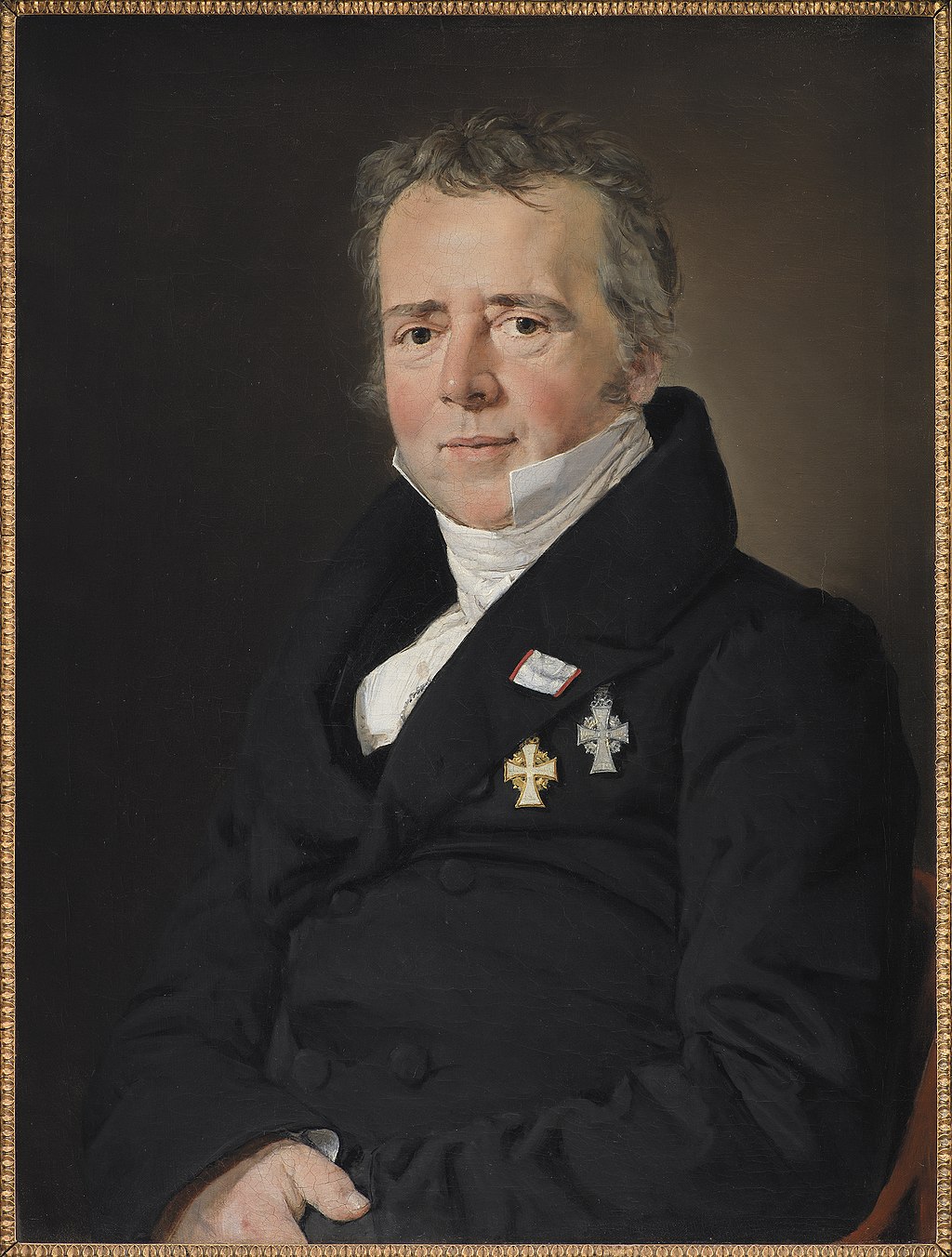博文
[请教,讨论] 奥斯特、法拉第、密立根:实验之前能预估结果吗?
||
[请教,讨论] 奥斯特、法拉第、密立根:实验之前能预估结果吗?
奥斯特: Hans Christian Oersted, 1777-08-14 ~ 1851-03-09, 73
法拉第: Michael Faraday, 1791-09-22 ~ 1876-08-25, 75
密立根: Robert Andrews Millikan, 1868-03-22 ~ 1953-12-19, 85

奥斯特 Hans Christian Oersted, 1777-08-14 ~ 1851-03-09, 73
https://www.lingoblog.dk/h-c-oersted/
1820-04-21,丹麦实验物理学家汉斯·克里斯蒂安·奥斯特(丹麦人称他为“奥斯特德”)在课堂上偶然发现了著名“电生磁”现象。
1831-08 ~ 1831-11,法拉第基本上通过实验弄清楚了“磁生电”的规律。
1907~1917,密立根采用油滴实验了测量电子的电荷量。
在这些著名是物理实验之前,有没有可以直接参照的他人的理论预言或实验结果?
真正的原初“0到1”创新,开始是“0”:什么都没有,什么都不知道。
参考资料:
[1] 2024-03-15,电磁感应/electromagnetic induction/陈熙谋,中国大百科全书,第三版网络版[DB/OL]
https://www.zgbk.com/ecph/words?SiteID=1&ID=31149&Type=bkzyb&SubID=61936
1820年H.C.奥斯特观察到通电导线扰动磁针的现象,发现了电流的磁效应,启发物理学家们探讨磁是否也能产生电,不少物理学家做实验均未发现。M.法拉第凭着他坚持磁能产生电的信念和他精湛的实验技术,以及敏锐捕捉现象的能力,经过十年不懈地努力,在1831年发现了磁产生电的感应现象。随后他又做了一系列的实验,探明了产生感应电流的条件和决定感应电动势的因素。
[2] 2022-06-05,法拉第,M. /Faraday, Michael/戴念祖,中国大百科全书,第三版网络版[DB/OL]
https://www.zgbk.com/ecph/words?SiteID=1&ID=119205&Type=bkzyb&SubID=61860
从1831年起,法拉第的科学工作进入一个新阶段。早在1824年,他就论证过,既然电对磁有作用,那么磁也应当对电有反作用。经过多次实验,他终于在1831年8月获得成功。他在一个圆形软铁环两边绕上A、B两组线圈,在A组线圈同伏打电池接通或切断的瞬间,B组线圈中会感生出电流,法拉第把这叫作“伏打电感应”。10月又发现,磁铁和导线的闭合回路有相对运动时,回路中会产生感生电流,法拉第称之为“磁电感应”。
[3] 2022-06-08,密立根油滴实验/Millikan's oil-drop experiment/陈熙谋,中国大百科全书,第三版网络版[DB/OL]
https://www.zgbk.com/ecph/words?SiteID=1&ID=38944&Type=bkzyb&SubID=61924
1897年J.J.汤姆孙测定了电子的荷质比,随后用实验确证了电子存在的普遍性,被世人誉为发现电子,于是测定电子电荷就成为当时物理学家们面临的重大课题。一些物理学家做出努力,然而实验结果颇为分散,不能令人满意。1907~1917年美国物理学家R.A.密立根做出重大改进,其油滴实验的装置如图所示。
[4] 2022-01-20,密立根,R.A. /Millikan, Robert Andrews/戴念祖,中国大百科全书,第三版网络版[DB/OL]
https://www.zgbk.com/ecph/words?SiteID=1&ID=116965&Type=bkzyb&SubID=61860
这个工作从1907年开始,直到1913年才最后完成,
[5] Linda Hall Library, 2024-04-22, HANS CHRISTIAN OERSTED
https://www.lindahall.org/about/news/scientist-of-the-day/hans-christian-oersted/
[6] Jim Al-Khalili. The birth of the electric machines: a commentary on Faraday (1832) ‘Experimental researches in electricity’[J]. Philosophical Transactions of the Royal Society A: Mathematical, Physical and Engineering Sciences, 2015, 373(2039): 20140208.
doi: 10.1098/rsta.2014.0208
https://royalsocietypublishing.org/doi/10.1098/rsta.2014.0208
[7] Faraday, M. Experimental Researches in Electricity, Volume 1 (Richard & John Edward Taylor, 1839) The book is compiled from articles published in the Philosophical Transactions of the Royal Society from 1831-1838.
https://www.computerhistory.org/storageengine/faraday-describes-electro-magnetic-induction/
[8] Robert Millikan, American physicist, britannica
https://www.britannica.com/biography/Robert-Millikan
In 1909 Millikan began a series of experiments to determine the electric charge carried by a single electron. He began by measuring the course of charged water droplets in an electric field. The results suggested that the charge on the droplets is a multiple of the elementary electric charge, but the experiment was not accurate enough to be convincing. He obtained more precise results in 1910 with his famous oil-drop experiment in which he replaced water (which tended to evaporate too quickly) with oil. Millikan varied the electric voltage between two metal plates as an oil drop fell between them until the drop stopped falling. When the drop was stationary, the downward force of gravity on the drop equaled the upward electrical force on the charges in the drop, and then Millikan could measure how much charge the drop had.
[9] Millikan oil-drop experiment, physics, britannica
https://www.britannica.com/science/Millikan-oil-drop-experiment
Millikan oil-drop experiment, first direct and compelling measurement of the electric charge of a single electron. It was performed originally in 1909 by the American physicist Robert A. Millikan, who devised a straightforward method of measuring the minute electric charge that is present on many of the droplets in an oil mist. The force on any electric charge in an electric field is equal to the product of the charge and the electric field. Millikan was able to measure both the amount of electric force and magnitude of electric field on the tiny charge of an isolated oil droplet and from the data determine the magnitude of the charge itself.
[10] National MagLab, Robert Millikan
https://nationalmaglab.org/magnet-academy/history-of-electricity-magnetism/pioneers/robert-millikan/
One of Millikan’s most significant research projects began around 1907, when he decided that there must be a method of more accurately determining the charge of an electron than those already in use. In particular, he sought a way to refine a technique developed by scientists at the Cavendish Laboratory in Cambridge, England, involving a falling mist of water droplets that resulted in significant variation in the charge value obtained. At first Millikan only made minor adjustments to the other method, but soon discovered a way of observing one water droplet at a time, a tremendous step forward. Later he further realized that the difficulty introduced in the experiment by the evaporation of the water could be completely eliminated by substituting oil droplets for water droplets. The end result was the incredibly precise Millikan oil drop experiment.
相关链接:
[1] 2017-07-07,脱离数量级谈物理效应,就是耍流氓?
https://blog.sciencenet.cn/blog-107667-1065164.html
[2] 2024-06-23,[请教,讨论] 电磁学的实验再检验(16):无定向秤( astatic balance )的系统误差是多少?
https://blog.sciencenet.cn/blog-107667-1439428.html
[3] 2024-05-14,[请教,讨论] 电磁学的实验再检验(12):为什么要“最直接”地再测量?
https://blog.sciencenet.cn/blog-107667-1434112.html
[4] 2024-05-19,[羡慕,讨论,物理] 仅推公式就能得到成果的人
https://blog.sciencenet.cn/blog-107667-1434748.html
[5] 2024-05-21,[请教,讨论] 电磁学的实验再检验(13):判定实验原理(1):磁感应强度 B 是矢量吗?
https://blog.sciencenet.cn/blog-107667-1435062.html
https://blog.sciencenet.cn/blog-107667-1435208.html
(1)“电磁学的实验再检验”,目前大体上类似拉姆齐(Sir William Ramsay, 1852-10-02 ~ 1916-07-23)发现惰性气体(noble gases)“neon, argon, krypton, xenon, 氖、氩、氪、氙”;又像密立根油滴实验(Millikan's oil-drop experiment),似乎没有什么其它可以参照的直接知识。因为处在真正的原初的“原始创新”阶段,真正的“源头和底层”。
(2)哥白尼、达尔文,当初也是类似这种原初的“没有什么其它可以参照的直接知识”情况吧?
牛顿、爱因斯坦,都是捡了大便宜的幸运儿!
牛顿有伽利略、开普勒等人的相对充分的基础;
爱因斯坦有“斐索实验 Fizeau experiment”等,
所以,牛顿、爱因斯坦,以及麦克斯韦,门捷列夫等都是“集大成”式的大综合。哥白尼、达尔文、开普勒,才是现在常说的真正原初的“0到1”。
当然,也可以认为牛顿力学、爱因斯坦的相对论、麦克斯韦经典电磁理论、门捷列夫的化学元素周期表,也是另一种“集大成”方式的“0到1”。
[6] 2024-06-16,[请教,讨论] 电磁学的实验再检验(15):光压与“电磁波的刚性”
https://blog.sciencenet.cn/blog-107667-1438456.html
现在,“被”处在类似法拉第在1831年、安培在1825年、毕奥和萨伐尔在1820年前后的处境。所关心的内容,实在没有什么可以直接参考的前人结果,无论是理论的还是实验的。俺们这些都是真正的原初“0到1”创新!
麦克斯韦老师真幸运!在家里推推公式,就完成了集大成“0到1”创新:麦克斯韦方程组。
[7] 2023-07-27,[阶段小总结,要点,小结] “电磁学的实验再检验”相关博文要点
https://blog.sciencenet.cn/blog-107667-1396886.html
[8] 2023-07-14,“电磁学的实验再检验”:经典电磁学实验当代再检验的起因、意义要点
https://blog.sciencenet.cn/blog-107667-1396886.html
[9] 2024-05-22,[请教,讨论] 电磁学的实验再检验(14):判定实验原理(2):电场强度 E 是矢量吗?
https://blog.sciencenet.cn/blog-107667-1435208.html
[10] 2024-02-07,[求助] 电磁学的实验再检验(11):电磁相互作用依赖参照系吗?
https://blog.sciencenet.cn/blog-107667-1420950.html
[11] 2024-01-26,[打听] “单光子”遇上“半反半透镜”:观察到什么现象?
https://blog.sciencenet.cn/blog-107667-1419489.html
[12] 2023-10-26,[最主流,实体的物理实验波形] “费曼电容器充电”的电压波形观察
https://blog.sciencenet.cn/blog-107667-1407363.html
感谢您的指教!
感谢您指正以上任何错误!
感谢您提供更多的相关资料!
![(热门)[请教,讨论] 奥斯特、法拉第、密立根:实验之前能 +1.jpg](http://image.sciencenet.cn/home/202406/26/183608xqi61n8bk95wzv1y.jpg)
https://wap.sciencenet.cn/blog-107667-1439574.html
上一篇:[请教,讨论] 电磁学的实验再检验(16):无定向秤( astatic balance )的系统误差是多少?
下一篇:[请教,讨论,笔记] 柯西:函数不一定要有解析表达式。(关联:分布参数系统 distributed parameter